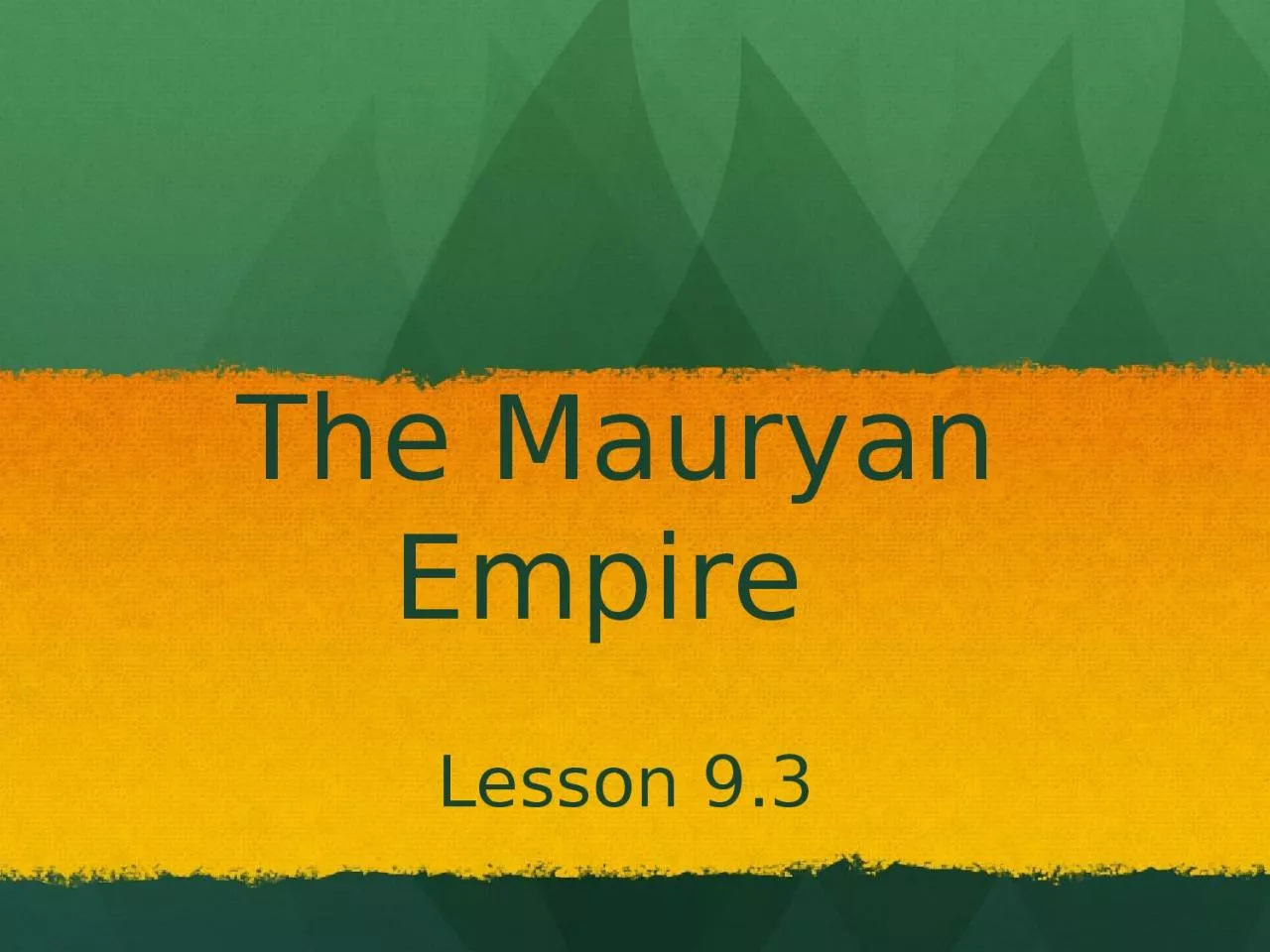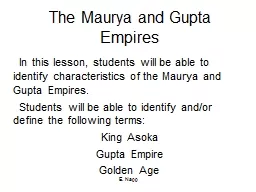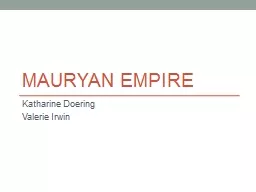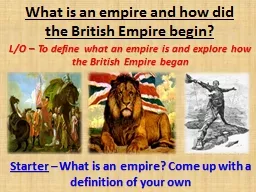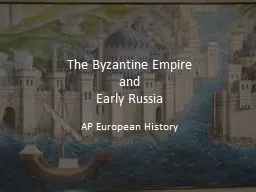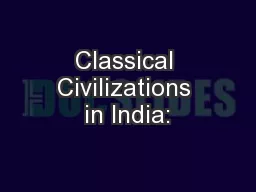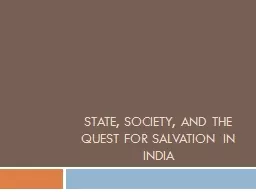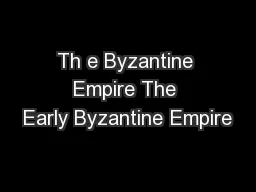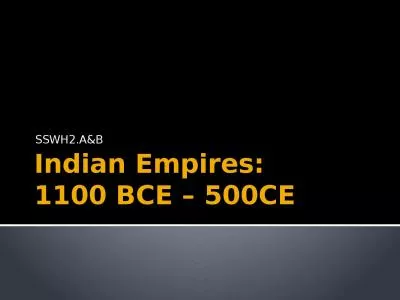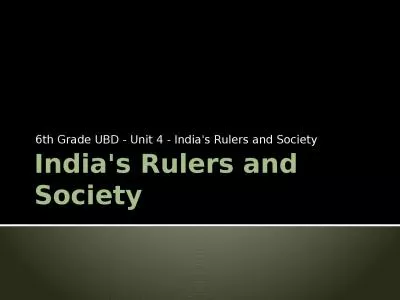PPT-The Mauryan Empire Lesson 9.3
Author : madison | Published Date : 2024-02-09
Origin of an Empire By the 500s BC India was divided into many small kingdoms The Greeks under Alexander the Great entered India but turned back when his homesick
Presentation Embed Code
Download Presentation
Download Presentation The PPT/PDF document "The Mauryan Empire Lesson 9.3" is the property of its rightful owner. Permission is granted to download and print the materials on this website for personal, non-commercial use only, and to display it on your personal computer provided you do not modify the materials and that you retain all copyright notices contained in the materials. By downloading content from our website, you accept the terms of this agreement.
The Mauryan Empire Lesson 9.3: Transcript
Download Rules Of Document
"The Mauryan Empire Lesson 9.3"The content belongs to its owner. You may download and print it for personal use, without modification, and keep all copyright notices. By downloading, you agree to these terms.
Related Documents

